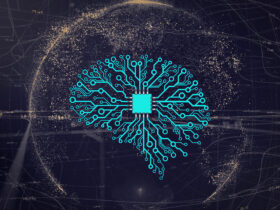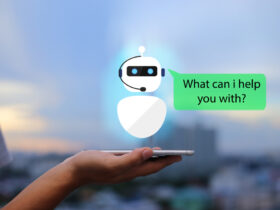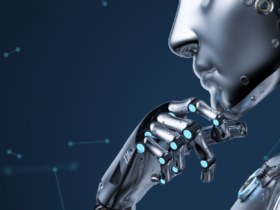The Best AI customer experience is a growing trend in business today.
Companies have realized that they have to hold onto customers to thrive. Some of the most powerful software companies in the world are using Best AI as a partial or total method of delivering their product or service.
There is no doubt that AI provides a great customer experience. Although there are many elements and characteristics, which make the customer experience great, in this article we are going to highlight the most important ones, but first of all, let’s understand what AI in customer experience really is.
What Is AI in Customer Experience?
An AI customer experience is the process of delivering intelligently informed and enhanced customer experiences through technology (including machine learning).
According to customer experience statistics, 80% of customers prefer companies that offer a unique ai customer experience. AI can enable you to deliver this reality to your users.
Artificial intelligence is a game-changer for customer experience in our always-on, hyperconnected society. The best brands use AI to create a seamless, relevant, and personalized experience for their users.
An Example of AI Customer Experience
Let’s say John finally discovered the perfect brand of fair trade tea for him. During his morning email check, he sees a message from the brand saying it might be time to reorder. Hopefully, he doesn’t run out.
During his morning routine, he realizes he has run out of tea. When he visits the company’s website later, it recognizes his IP address and displays a reminder of his last order so he won’t have to type it in again. Within minutes, his order has got placed, and the products were on their way.
To provide John with a personalized experience, the tea brand tracked his order frequency, sent him a friendly reminder when it was time to reorder, and remembered his last purchase.
Behind the scenes, various customization was taking place to make the shopping process more seamless and personalized.
3 Ways Artificial Intelligence Can Improve Customer Service
Chatbot-based customer support
Day-to-day, customer service representatives deal with a large number of calls. Their challenge is also to reduce average customer resolution time. In both cases, chatbots can play an important role.
By answering a high number of customer queries with the highest accuracy and human-like behavior, chatbots can reduce the burden on human agents by providing prompt answers in real-time.
Enhancing customer interactions
Bringing artificial intelligence into customer interactions can have a significant impact. AI-augmented messaging and AI email tagging are two of the most important ways in which AI augments customer service.
A chatbot assistant can handle a large percentage of customer queries through AI-augmented messaging. AI-powered programs can scan emails, tag them, and direct them to the appropriate office with AI email tagging, so humans don’t need to read all customer emails.
As a result, service representatives could focus on more complicated tasks that would otherwise require human intervention.
Personalized user experiences
Approximately 71% of consumers prefer to handle customer service issues themselves. Artificial intelligence can significantly assist customers in finding the appropriate information. Business AI systems analyze customer data and metrics and recommend products and services based on their browsing/buying preferences.
Using AI, you can analyze huge data sets, draw information such as the weather and location, and offer customers relevant content. Creating customer personas can help businesses understand individual customer purchasing patterns and better serve them.
As a result, they can deliver relevant content to their target audience at the right time. Due to this, customers can solve their problems without having to contact customer service.
AI Supports Marketing & Sales in Understanding the Customer Journey
Artificial Intelligence (AI)-powered marketing and sales tools should be welcomed, not feared.
What’s the reason? Your company can use this technology to gain a deeper understanding of your customers and their journeys before they make a purchase.
Here are four stages that can get used in AI, or machine learning, to enhance the customer experience – attract, engage, win, and support and delight.
Stage 1: Identify the right audience using machine learning
Being found online is one of the keys to success in today’s massive digital world. Most people don’t find it as easy as it sounds. Brands can easily get lost in the noise of the internet. It is also possible to monitor social media using AI technology.
There’s always a risk of missing an ample opportunity with social media because it moves so fast.
A company can leverage artificial intelligence to track thought influencers, identify trending topics or phrases, capture customer feedback, and monitor brand mentions.
Stage 2: Optimum Buyer Engagement
Once you have reached out to potential buyers through your website and social media channels, what next? With AI technology, you can make your customer’s experience more personalized.
With AI-enabled platforms, you can identify behavioral patterns from various inputs, which would take your team countless hours to organize, collect, and analyze manually.
By dividing your audience based on demographics, interests, engagement levels, and behaviors, you can create content that can fit their needs.
Stage 3: Replace cold calling with AI-driven sales
Now, you can receive notifications before sales even make contact with a lead when it goes from cold to warm to hot with the help of machine learning.
Based on artificial intelligence, a system can track the behaviors of potential customers. And then score them based on factors like how long they spent on a website, how many times they returned, how many social media posts they saw, how many emails they opened, and more.
This way, your sales team will know exactly when to reach out and when not to reach out to a lead as it becomes hot.
Stage 4: Maintain customer loyalty by delighting them
Deliver what customers want and when they need it to reduce churn and increase loyalty. By capturing data, artificial intelligence can help your team create an individualized customer experience during and after a successful purchase.
For example, you could offer incentives, upsell products, or content to help sell your product. Netflix, Amazon, and Spotify are good examples of companies using AI for delight and retention.
Netflix and Spotify both suggest movies and music based on your past interactions, while Amazon offers “other products you may be interested in.”
Major Brands Use AI to Improve Customer Experience
Companies are using AI and machine learning to craft excellent customer experiences everywhere.
In these examples, Spotify and Starbucks have used AI to improve in-app search, engage customers, and recommend products effectively.
Spotify Discover Weekly
Once a week, Spotify delivers Discover Weekly, a playlist powered by artificial intelligence. Each playlist gt curated by Spotify’s algorithm based on user listening habits.
Streaming music by Spotify keeps users engaged and the happy week after week by introducing them to new music.
Starbucks Product Pairings
Starbucks customers may not be aware of the AI magic working behind the scenes when they use the app to place an order. There’s a reason they get tempted to choose a sandwich or danish that goes perfectly with their favorite brew when ordering it online.
AI Assistance In Every Customer Journey Stage.
There are now endless opportunities for customers to interact online and offline. For marketers to recognize all touch points with their customers, they need a single view, not a series of snapshots.
In their approach, marketers deny that centralized customer data is fundamentally wrong. It takes a lot of effort to send personalized messages without a unified customer view.
An AI-enabled system has to be built into the core of the system to provide seamless customer experiences across channels and enable real-time personalization. From the initial interaction to the final sale, AI helps companies provide a wholesome customer experience from the initial interaction to the final sale.
For example, in traditional approaches to predicting customer lifetime value, historical customer data is used solely to predict the value of a customer. However, AI-powered CLTV models consider many used cases, including buying behavior, to make better predictions.
For example, how recently and frequently they are buying, the value of their purchases, etc., can be used to predict what they will do in the future.
Conclusion
Customer service is the face of any organization. An effective customer service leader is a human who knows the context and meaning of an AI, and who can intervene for this purpose if necessary.
On the one hand, it’s about the organization taking advantage of AI to operate more efficiently and perform optimally; on the other hand, it’s about learning what genuine customer service means.
The best AI customer service is here to improve the experience of consumers and show them how AI can be used to change the way we do business.












